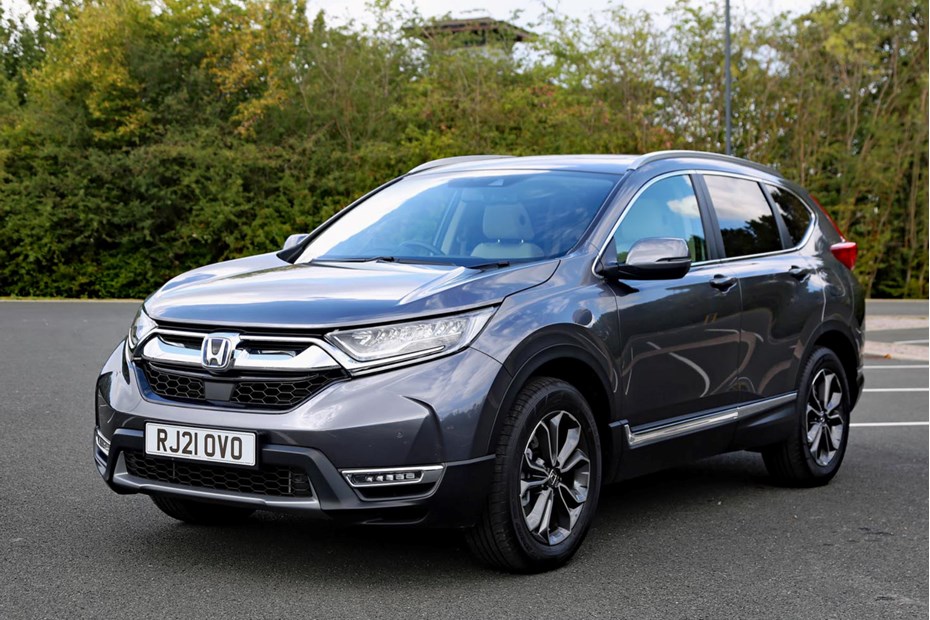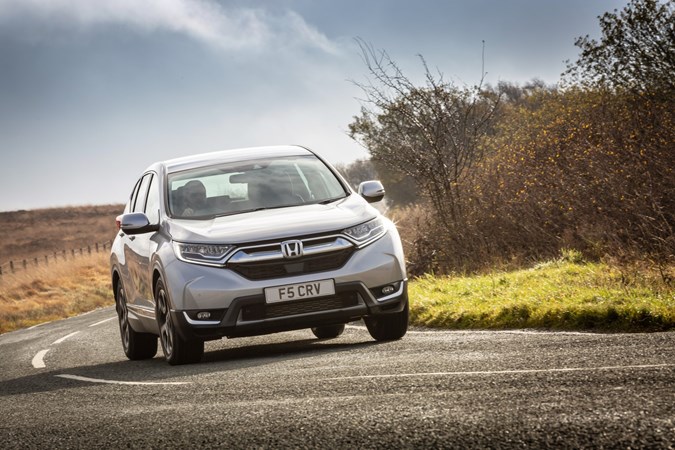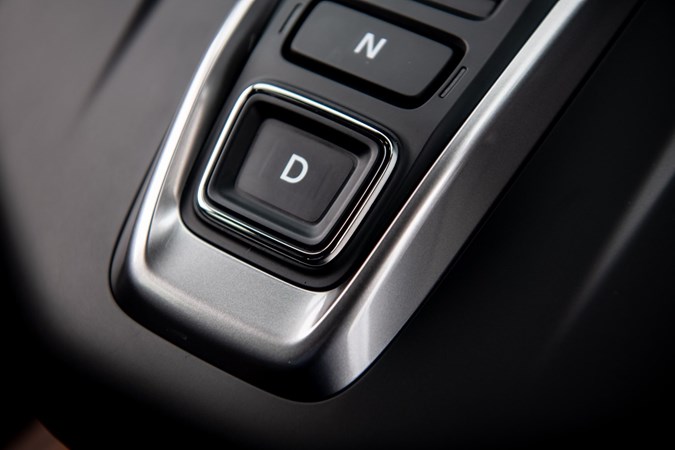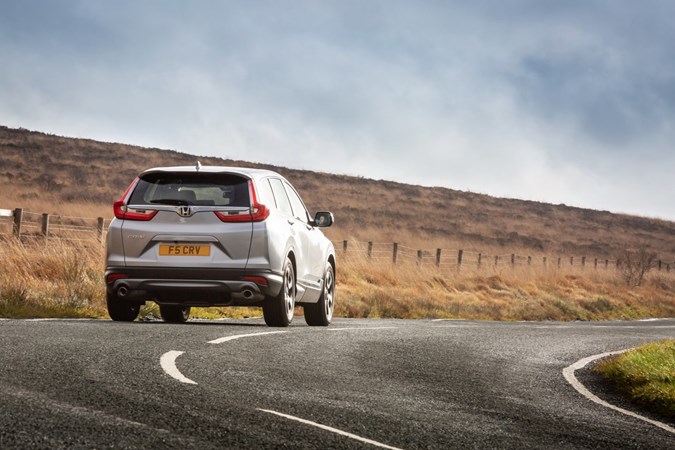
Honda CR-V SUV engines, drive and performance


- Perky to drive
- But noisy
- Not much difference between two and four-wheel drive
What engine options are there?
The CR-V was previously available with a 1.5-litre turbocharged petrol engine, but this was dropped from the range leaving only the CR-V Hybrid.
This pairs a 2.0-litre petrol engine with a pair of electric motors to produce a total of 184hp. That’s a healthy power output for a car of this size, and it’s backed up with 315Nm of torque to make for punchy getaways.
Hybrid engines
| Engine | Power and torque |
0-62mph time |
Top speed |
| 2.0-litre 2WD |
184hp, 315Nm |
8.6secs |
112mph |
| 2.0-litre 4WD |
184hp, 315Nm | 8.9secs |
112mph |
The hybrid engine works in three ways:
EV Drive: the battery powers the electric motor driving the wheels for up to 1.2 miles
Hybrid Drive: the engine charges a generator, which in turn powers the electric motor driving the wheels
Engine Drive: the petrol engine drives the wheels directly
Around town and at low speeds, the CR-V will switch between EV and Hybrid mode as it sees fit. Since the engine never actually powers the wheels at this time, the result is a very smooth, slick powertrain that feels rather like a pure electric vehicle to drive. There’s no clunking as the engine engages and disengages, like you’ll find with some hybrid vehicles.

In Hybrid drive, the engine runs quietly, though if you put your foot down and ask for a sudden burst of performance the revs climb quickly and it becomes raucous.
At a cruise, it runs constantly, and is less refined than some rivals – but it’s still a quiet engine, and has just about enough performance to make longer motorway trips pain-free.
Honda offers the CR-V hybrid with either front-wheel drive or four-wheel drive. The latter models are more expensive, thirstier, slower, and to be honest we can’t tell much of a difference when it comes to driving them. No CR-V is particularly suitable for off-roading, and if you’re cursed with a particularly slippery driveway a set of all-season tyres would seem to be a better bet.
However, if you want the top trim level with all the toys, you’re limited to the 4WD powertrain.
Handling
- Well-weighted steering
- Set up with families in mind
- Sportier options available
Despite its status as a fairly large family car, the CR-V handles remarkably well. By no means is it a Honda Civic Type R in the corners, but it doesn’t roll and wallow about leaving you falling out of your seat, either.
The steering is more communicative than you might expect. Again, it doesn't offer as much feedback through the seat and wheel as a Civic, but it’s nicely weighted and inspires confidence in where you’re pointing the CR-V on a twisty road.

Compared with something like the light steering of the VW Tiguan, its greater heft makes it more enjoyable when on a country road. Just don’t forget if you’ve got the kids in the back.
Body control is good, too. There’s some bodyroll due to the car’s height, but it doesn’t feel out of control and does feel a touch more agile than the Tiguan, too. It’s not quite as darty as a Mazda CX-5 or Ford Kuga, though, but manages to blend feeling controlled and comfortable very well. The nose of the car doesn’t lift and dive like the Mazda does, though, making it feel a little more civilised on the move.



